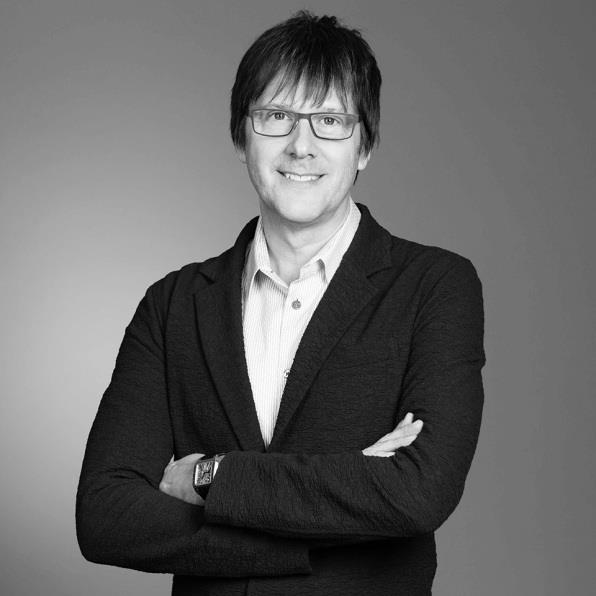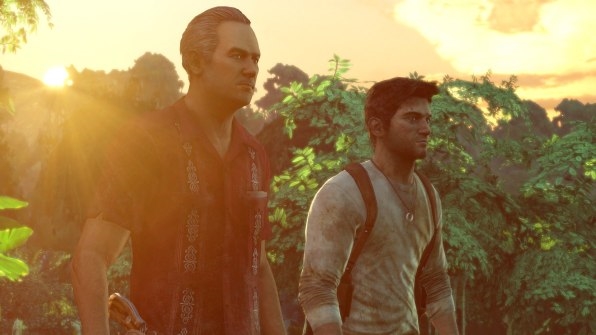Sony’s Most Valuable Contractor
Just before Mark Cerny jumped onstage to reveal the PlayStation 4 during a 2013 press event, he was introduced by Sony Interactive Entertainment CEO Andrew House as the console’s lead system architect and a games industry veteran.
House didn’t mention that Cerny had never designed a gaming system until he started working on the PlayStation 4 roughly five years earlier. House also omitted the fact that Cerny wasn’t a Sony employee, and never has been throughout his weird 35-year career.

Instead, Cerny is arguably the most reputable contractor in video games, and certainly at Sony. Although he doesn’t work for any other company, he occupies a unique position outside Sony’s chain of command, allowing him to follow his interests across projects and avoid bureaucratic roadblocks. Beyond just helming Sony’s flagship game console, Cerny continues to develop video games, including Knack II, which launched on the PlayStation 4 last month.
In an interview, Cerny says he seldom even thinks about full-time employment, and neither does Sony. The high-level contractor role is mutually beneficial.
“It’s clear organizationally that this is welcome,” he says.

Going Solo
Cerny’s career path has been well-documented. He joined Atari in 1982 to work on arcade games, including Marble Madness. In the late 1980s, he took a job at Sega’s Tokyo office, where he learned to speak Japanese while working on games for the Master System console. (While there, he also met his future wife, who as the other half of Cerny Games handles all accounting and business matters.) At Crystal Dynamics, he began forging a relationship with Sony, and arranged to get a PlayStation development kit before any other U.S. studio.
But in the late 1990s, Cerny decided to become his own boss. At the time, he was the president of Universal Interactive Studios, which he describes as a “boutique publisher,” despite the Hollywood affiliation. Universal was more focused on movies and music than games, Cerny says, and although the studio had found some success with games like Spyro the Dragon and Crash Bandicoot, the company as a whole was struggling financially, and Cerny’s group bore the brunt of a hiring freeze. Soon after, the developers Cerny was working with separated from Universal to create games directly for Sony, and Cerny didn’t want to leave them.
“I really had a choice I had to make, which was either to stay with Universal and try to make everything work as an executive there, or to go independent and work as a consultant to Naughty Dog, Insomniac, and Sony–to be working for teams that I loved,” he says. “And of course I chose the latter.”

Moving Into Hardware: “I Like Low-Level Technology”
For nearly a decade after, Cerny worked exclusively on software, contributing to games like Ratchet & Clank, Resistance: Fall of Man, and Uncharted: Drakes Fortune. But each time Sony released a new PlayStation system, he worked at increasingly lower levels of the hardware, figuring out how to make better games.
“I like low-level technology,” Cerny says. “I like anything where you can dig in deep and do amazing things, and I was definitely trying to get deeper into the process each time.”
When Sony was developing the PlayStation 2, for instance, Cerny spent three months at Sony’s headquarters in Japan, working with developer kits in a locked room. This allowed him to build a game technology engine for Naughty Dog and Insomniac, which in turn gave them a head start on making games for the console. Later, Cerny became one of a select few game developers that Sony invited to sit on development of a custom graphics chip for the PlayStation 3.
“There were long periods of time where if there was somebody with a games background in the room, it was me,” he says.
Cerny’s role in architecting the PlayStation 4 was both an extension of those efforts and the result of a hardware leadership vacuum within Sony. Shortly after the PlayStation 3 launch in 2006, Ken Kutaragi stepped down from his role as president and group CEO of Sony Computer Entertainment, and he left the company entirely five months later.
Although Sony billed Kutaragi’s departure as a retirement, the company has also acknowledged that the PlayStation 3 was a step backwards. The console initially cost $100 more than Microsoft’s rival Xbox 360, and developers complained–sometimes publicly–of difficulties developing for Sony’s Cell architecture. With Kutaragi out, PlayStation was at a crossroads.
“The big decision was to keep going as had been done, which is to say that hardware guys drive the hardware, or to bring in a games person at a high level,” Cerny says.
In 2008, Cerny had the idea to pitch a new console based on x86, the same hardware architecture that powers Windows PCs. Although this would make game development much easier, it would also preclude developers from doing the kind of low-level technology work that can squeeze better performance out of the hardware.
Cerny recalls overpreparing for his case–“death by Powerpoint,” he says–ahead of an hours-long meeting with Sony executives and the heads of the company’s worldwide studios. Despite his contractor status, Cerny got the job.
“At that point, for somebody with a games background like myself, who was also very exposed to the hardware side, was interested in putting a lot of time into it, and who was bilingual . . . I think I was the only person with that background,” Cerny says.

The Benefits Of Being An Outsider
Cerny has no intention of working for other companies. He doesn’t even believe that would be appropriate given his involvement in Sony’s long-term hardware plans, as he would inevitably learn about what competing console makers are doing by working on games for other platforms.
Still, Cerny’s contractor status gives him a degree of freedom within Sony. With the PlayStation 4, for instance, he was able to coordinate with various cogs in the machine–the low-level software kernel engineers, the hardware vendors, the chip makers, and the user experience designers–without ruffling feathers. And while an executive might also have that kind of latitude, Cerny doesn’t have to spend time on budgets or hiring. Officially, he doesn’t even have any responsibilities.
“I think the big benefit for the hardware is, I can contribute freely in a way that makes sense without crossing any organizational boundaries, because I’m outside of the organization,” Cerny says.
That role also gives him unique access to Sony executives like Andrew House, who first met Cerny in the mid-1990s while working on a marketing campaign for Crash Bandicoot. In developing the PlayStation 4, House recalls having “thoughtful, well-informed debate” about what features to include–Cerny advocating for more capabilities, and House trying to keep budgets under control. In one example, Cerny pushed to double the console’s memory during its final year of development, arguing that its transformative impact on game development would justify a massive increase in costs.
“It just works for us to have Mark slightly removed from the organization, and able to have that somewhat more detached, neutral perspective,” House says. “And then to have very direct access to me, and a relationship that’s based on very deep, personal trust, I think for me is where the magic happens.”
Cerny even resists the idea of structuring some kind of permanent hardware role, because he still spends about half his time on game development. When he’s not tied up with other projects, he’ll look across Sony’s worldwide studios to see what games are starting up before figuring out where to lend his talents. He generally helps out with the scoping and structure of games, the types of technology they’ll use, and certain elements of their design.
“Once a project finishes, it’s not as if anybody’s saying, ‘Gee, what do we do with Mark?’” Cerny says. “I talk to various people in the organization and see if there’s a project that could use some aspect of what it is I do.”
With Knack II, which launched last month, Cerny had a more central role. He’s billed as the game’s co-director and co-writer, and he gave demos to the press during the E3 trade show in June. (Cerny also spearheaded the original Knack, which was not well-received. In an interview with Polygon, he alluded to challenges getting the game out in time for the PlayStation 4’s launch; reviews seem more positive this time around.)
Although Cerny is comfortable in the role he’s built up at Sony, he does become slightly wistful when asked about what he might’ve done differently. Over the years, he says, he’s received several lifetime achievement awards, but when he looks at other recipients, they’ve all been primary creators on critically acclaimed games. Cerny’s talent has always been to juggle lots of games–and, now, game systems–yet wonders if his skill set might have been better had he focused more on one project at a time when he was younger.
Even now, when a big-budget game can involve eight years of development time, the opportunity to helm one title from start to finish is something he still thinks about.
“I would love to do that before I retire,” Cerny says. “Then again, you have to be asked, and there aren’t that many of those positions available.”
Fast Company , Read Full Story
(30)














